Type species: Sphinx stellatarum Linnaeus, 1758.
An Old World genus containing 80 tropical and subtropical species.
IMAGO: Genal process very large, triangular. Distal margin of wings never dentate or lobate; forewing apex always pointed, but never falcate. Head broad, without distinct tuft. Antenna club-shaped in both sexes, tapering abruptly to a short hook. Terminal segment slender, long, almost filiform in some species, shorter in others. Eye with distinct pendant lashes. Labial palpus broad with porrect, pointed tip and triangular terminal surface. Thorax and abdomen broad, flattened; latter bears lateral and fan-tail tufts. Abdominal spines heavily chitinized as in Hemaris Dalman, 1816, arranged in several rows. First row rounder and broader than long, with exception of proximal segment. Seventh abdominal sternite triangular with a membranous, non-spinose apex in female (unlike Hemaris). Mid- and hindtibiae different in length, the midtibial spur with a comb of stiff bristles or spines. Midtarsus with basal comb. Spurs of hindtibia very unequal. Pulvillus present, paronychium with two pairs of lobes. Veins R2+R3 and R4 of forewing not joined distally as in Hemaris. Veins Rs and M1 of hindwing originating separately from upper angle of cell; M3 and Cu1 likewise never stalked.
To human eyes the forewings of most species are various shades of dull brown or grey; however, under ultraviolet light they yield characteristic fluorescent yellow, violet, purple and green patterns. To birds and other insects, which can see ultraviolet, these seemingly dull species are probably brightly patterned.
OVUM: Ovoid, small, pale yellow, or greenish yellow to green.
LARVA: Head small, rounded, semi-oval or subquadrate. Thorax slightly tapering forward. Longitudinally striped and granulose; horn straight and erect. No eye-spots present.
PUPA: Proboscis fused with body, but produced anteriorly, carinate. Dorsum of abdominal segments 1--5 flattened. Yellowish or brownish with black markings. Abdominal spiracles set in dark patches. Cremaster variable. In a loosely spun, silk cocoon on the ground.
HOSTPLANT FAMILIES: Herbaceous plants, principally of the Rubiaceae, Valerianaceae and Caryophyllaceae.
UK: Hummingbird Hawkmoth; Eurasian Hummingbird Hawkmoth, F: Moro-Sphinx; Sphinx Colibri, D: Taubenschwänzchen; Kolibrischwärmer; Sternkrautschwärmer, RUS: Brazhnik-yazykan, S: Stor Dagsvärmare; Större Dagsvärmare, NL: Kolibrievlinder, CZ: Dlouhozobka svízelová, H: kacsafarkú lepke; kacsafarkú szender, E: cola de paloma, PL: Fruczak golabek, FIN: Etelänpäiväkiitäjä; Isopäiväkiitäjä, I: sfinge colibri; sfinge del galio, HR: obična golupka, DK: Duehale, N: Dagsvermer, EST: Päevasuru.
Sphinx stellatarum Linnaeus, 1758, Syst. Nat. (Edn 10) 1: 493.Type locality: Unspecified [Europe].
[Further details on this species, as well as photos of all stages, can be found on Lepiforum.]
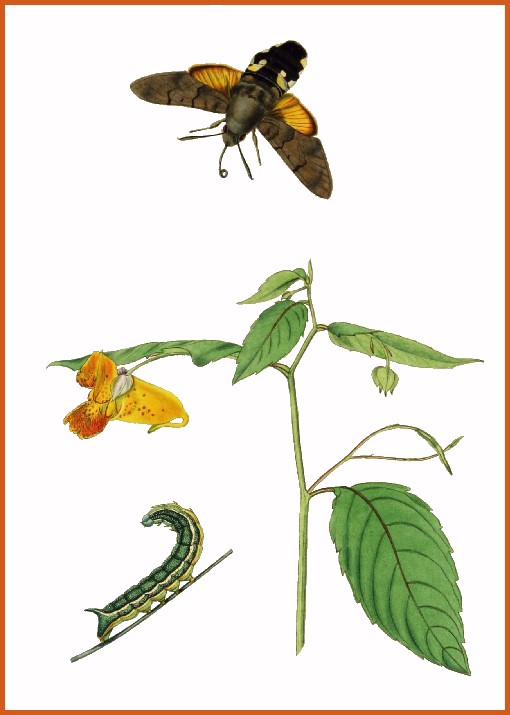
Holarctic; Palaearctic (both eastern and western subregions). Pleistocene refuge: Polycentric -- probably several refugia, from the Mediterranean to the Sinopacific.
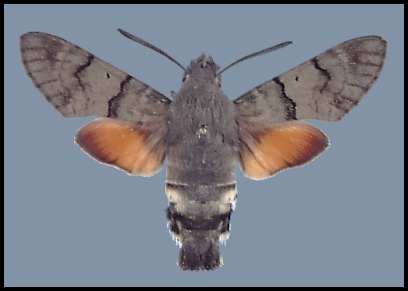
Wingspan: 40--45mm. A very distinct species confusable only with some freshly emerged Hemaris species which have not yet lost their wing scales. Not prone to much variation though sometimes very pale, albinistic specimens occur, as do individuals with blackish brown abdomens and hindwings (f. subnubila Schultz, 1904).
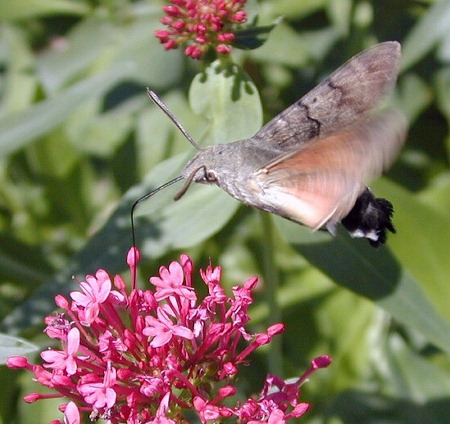
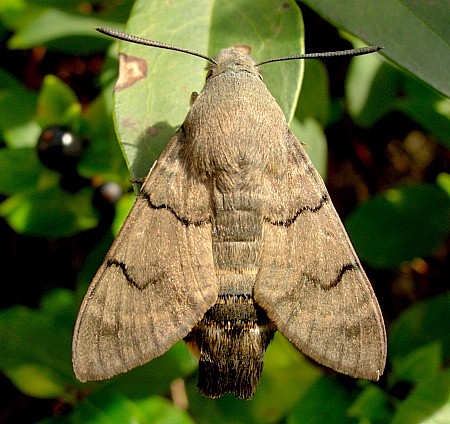
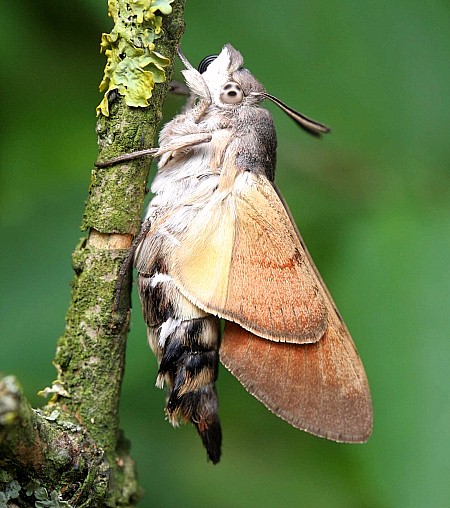
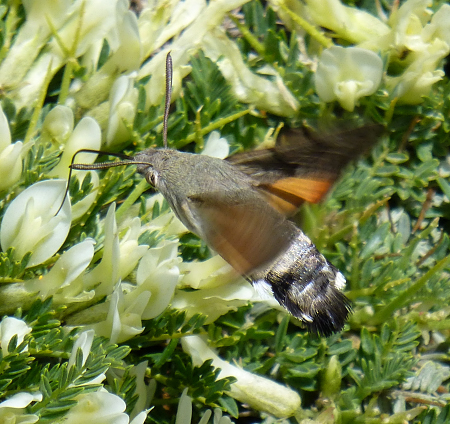
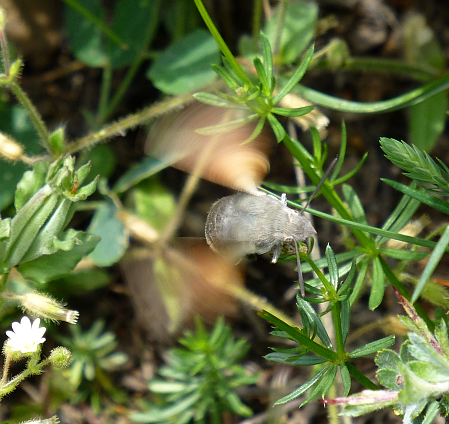
Diurnal. In behaviour, this moth is exceptional amongst European Sphingidae: whilst preferring to fly in bright sunlight, it will also take wing at dawn, at dusk or at night; in rain, or on cool, dull days. Very hot weather tends to induce a state of torpidity in many, with activity then confined to the relative cool of the morning and late afternoon. Herrera (1992) found maximum activity occurring between 18.00 and 20.00 hours in southern Spain. Whatever the flight-time, this species is very strongly attracted to colourfull flowers yielding plentiful supplies of nectar, such as Jasminum, Buddleja, Nicotiana, Tulipa, Primula, Viola, Syringa, Verbena, Echium, Phlox, Bougainvillea and Stachys, hovering in front of and repeatedly probing each bloom before darting rapidly to the next. Visual stimuli (not scents) are the main source of attraction to flowers in this species (Balkenius, Rosén & Kelber, 2006). In late summer it can become addicted to the flowers of Abelia around the Mediterranean (Pittaway, pers. obs. 2019). A great wanderer, being present right across Europe from above the alpine tree-line to city centres, wherever nectar flowers may be found. Its powers of flight are amazing, and have been studied in detail by Heinig (1987). Apparently, this species also has a fine memory, as individuals return to the same flower-beds every day at about the same time (Pittaway, 1993). (See also Heinig (1981a, 1984).)
When not feeding, pairs in courtship can be seen dashing up and down around steep cliffs, buildings, or over selected stretches of open ground. Pairs in copula can occasionally be found in such locations, although they seldom stay together for more than an hour. Whilst in copula, unlike other hawkmoths, this species is still capable of flight in a manner similar to butterflies. After a further period of feeding, gravid females search for patches of Galium growing in sunny locations. While hovering, each patch is carefully examined, sprig by sprig, before a single ovum is placed amongst the flower-buds. Up to 200 ova may be deposited by each female, therefore egg-laying can take a considerable time. In summer in southern Europe, many females will move up to rocky but sunny, Galium-rich, high altitude mountain pastures above the tree-line in order to breed, with the resulting adults moving down into the warmer valleys during the autumn.
Macroglossum stellatarum is unique among sphingids of the region in overwintering as an adult, although north of the Alps very few survive. With the onset of cooler weather, individuals can be seen examining caves, rocky crags, empty houses, holes in trees or sheds, before selecting a suitable place for hibernation. This state of torpidity is not absolute, however, for warm days in December and January may bring some out to feed.
[Detailed information on adult behaviour and the life-history of this species is given by Harbich (2004) and Déom (2005), particularly the latter.]
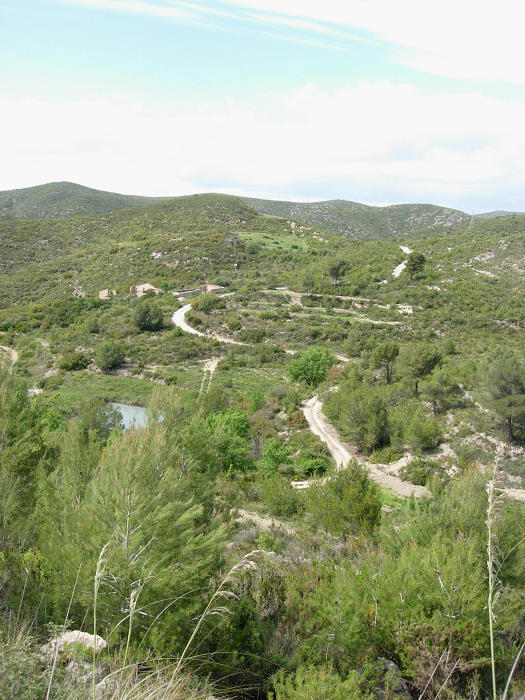
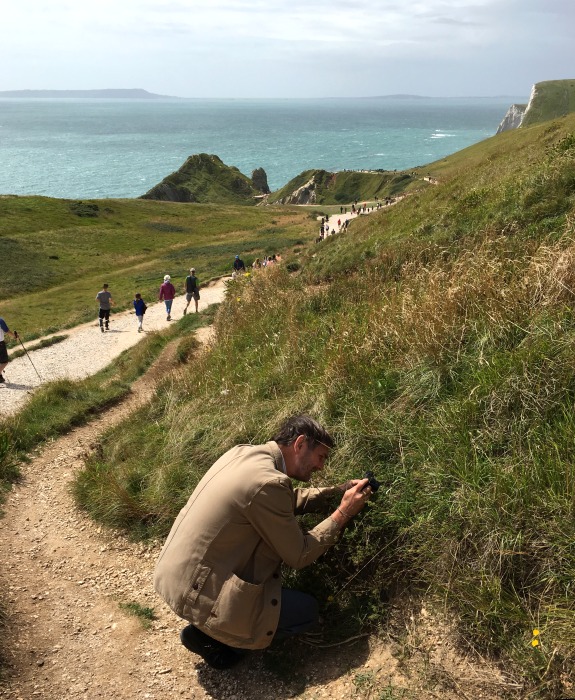
Migrant and multivoltine. Over its southern range, most of the year in three or four broods, retiring into a state of semi-hibernation during winter. Farther north, migrants appear around about April or May, giving rise to two main generations, one in June, the other in August/September, with a number of smaller broods in between.
OVUM: Almost spherical, approximately 1mm in diameter, glossy, pale green, resembling unopened flower-buds of Galium. This stage lasts from six to eight days.
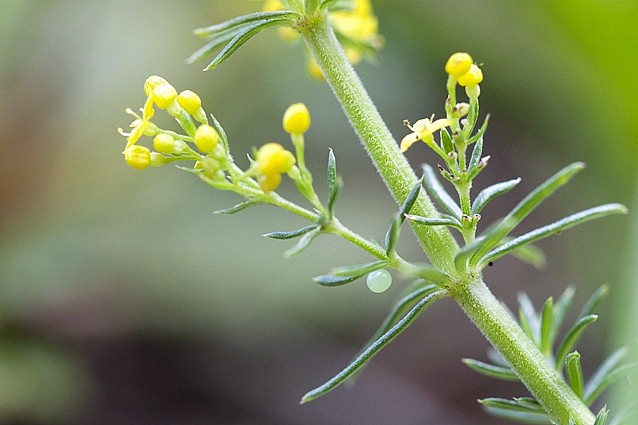
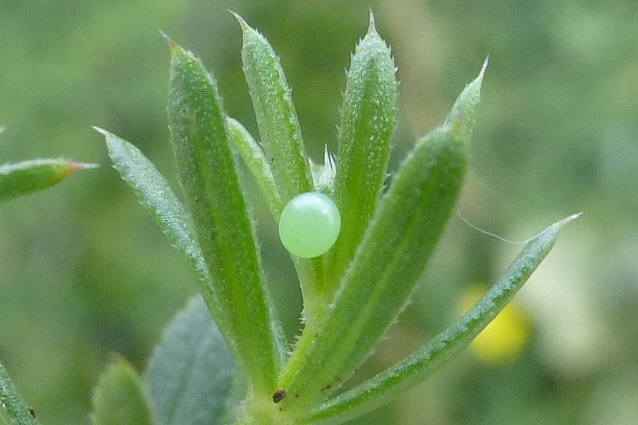
LARVA: Full-fed, 45mm. Polymorphic. Newly-hatched larvae are about 2--3mm in length, cylindrical and clear yellow. They eat copiously from the outset and so grow rapidly. In the second instar they assume their green coloration, covered with tiny yellow dots. A dark grey, cream-bordered, dorso-lateral line runs from head to horn, matched by an identical ventro-lateral band. The dorsal heart line is deep green; the tail horn purplish red with an orange tip. This pattern remains to the final instar, with only the predominant colour of the horn changing from reddish to blue with an orange tip. In some, however, the green body colour is entirely replaced by reddish brown, which effectively masks the final, pre-pupation, rich plum coloration.
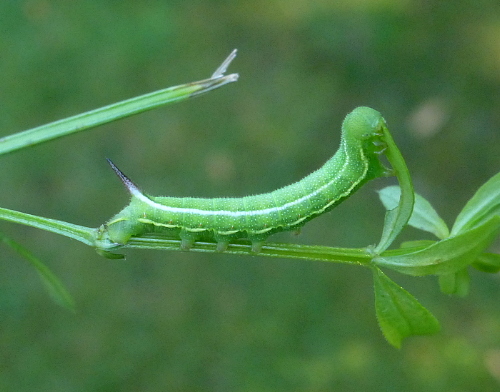
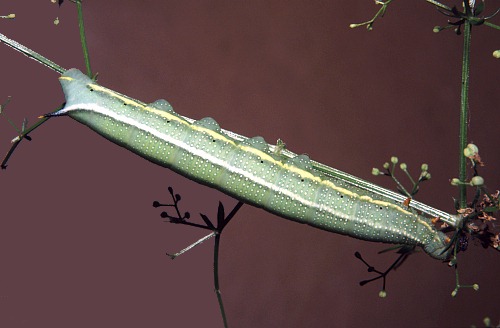
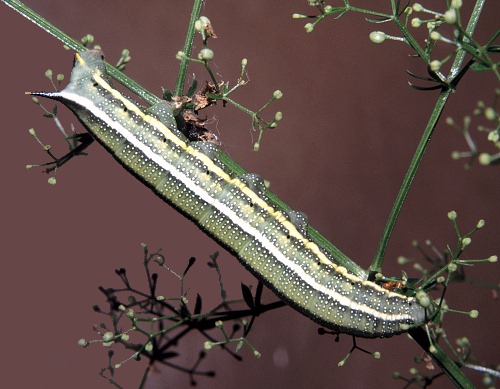
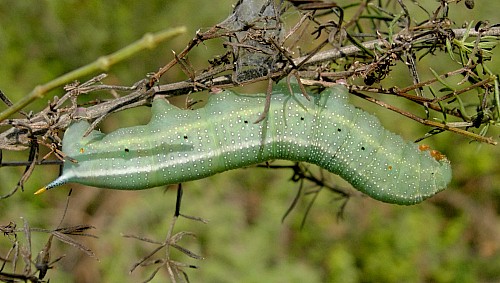
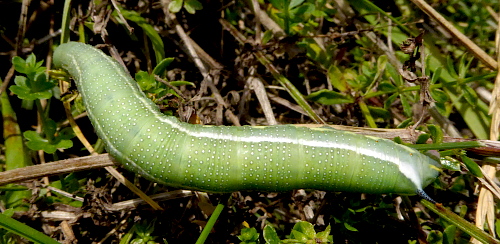
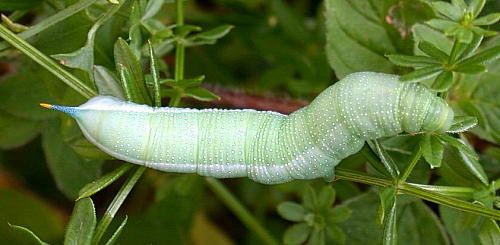
Feeding takes place fully-exposed at the top of the plant, with no time preference being shown. When resting, or moulting, most larvae retire to within the bed of tangled stems. Often, several fully-grown specimens may be found in the company of a number of Deilephila porcellus (Linnaeus, 1758) larvae; both share the same habitat preferences. With ample food and sunshine, this stage may be as short as 20 days. (See also Heinig (1981a, 1984).)
Can be found throughout the summer months, with two peaks of abundance in the north: one during May and June, the other during August. Occurs almost anywhere where Galium is present in open situations, i.e. commons, field edges, roadside verges, sand-dunes, railway embankments, and even high alpine meadows over its southern range.
Major Hostplants. Galium spp. and, from central Europe south, Rubia spp.
Minor Hostplants. Other Rubiaceae (Plocama (syn. Jaubertia, Neogaillonia, Gaillonia) in Oman (Walker & Pittaway, 1987)), and Centranthus, Stellaria and Epilobium. In the Canary Islands larvae can sometimes be found in large numbers on the ornamental Plocama pendula.
PUPA: 30--35mm. Pale translucent brownish cream, splashed with darker brown, especially on wings and spiracles. Proboscis prominent, keeled, laterally compressed, black along keel. Cremaster terminating in two sharp spines. Enclosed in a silken cocoon spun low down among the hostplant, or among debris on the ground. Does not overwinter.
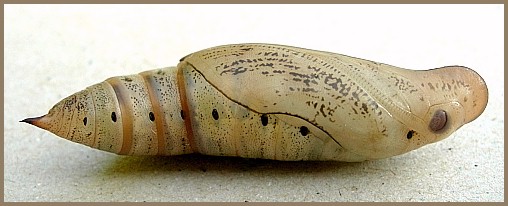
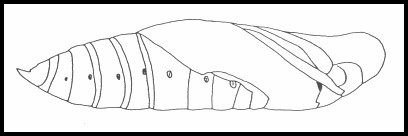
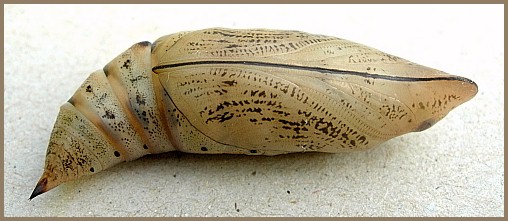
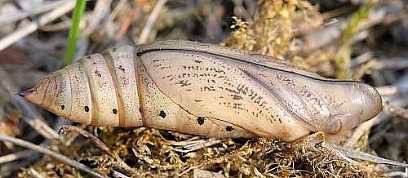
Ichneumonidae: Amblyjoppa fuscipennis (Wesmael, 1845), Coelichneumon deliratorius (Linnaeus, 1758), Ischnus migrator (Fabricius, 1775); Braconidae: Cotesia glomerata (Linnaeus, 1758); Tachinidae: Compsilura concinnata (Meigen, 1824), Exorista larvarum (Linnaeus, 1758), Oswaldia spectabilis (Meigen, 1824).
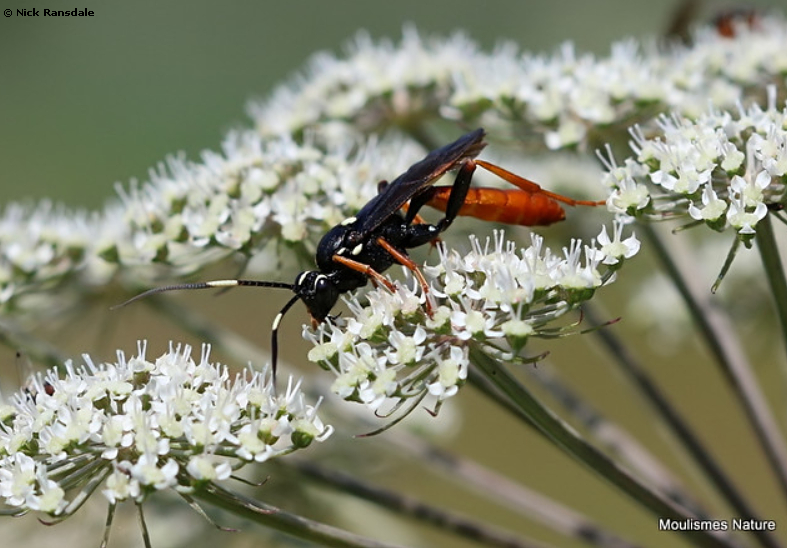
From southern Europe and North Africa to Central Asia, the Altai Mountains (Izerskiy, 1999; Davydov et al., 2023), the Middle East and Pakistan (Swinhoe, 1885; Rafi et al., 2014). A noted summer migrant to the north, with examples recorded from Syktyvkar (Tatarinov, Sedykh & Dolgin, 2003) and Arkhangelsk Oblast (Kozlov, Kullberg & Zverev, 2014) in european Russia. In the southernmost part of its resident range, confined to mountains, as in Iran (Ghassemi, Alemansoor & Alehossein, 2010), Oman (Wiltshire, 1977; Legrain & Wiltshire, 1998) and the Hoggar of Algeria (Speidel, Hassler, Back & Hassler, 1989; Eitschberger, Mooser & Müller, 2014). This is only one of five species of sphingid to have reached the Azores (Meyer, 1991; Vieira, 2003; Vieira, Borges, Karsholt & Wunderlich, 2003) and, in the exceptional years of 2022 and 2023, numerous adults and larvae were found in the UK and the Netherlands.
Extra-limital range. The entire temperate eastern Palaearctic Region, as far north as southern Yakutia/Sakha (Kaimuk et al., 2005) and as far east as Japan and the Russian Far East (Izerskiy, 1999), including the Kurile Islands (Dubatolov, Zinchenko & Ustjuzhanin, 2023). In winter, a migrant as far south as southern India, the Republic of the Congo (Rougeot, 1972) and the Gambia in Africa, and urban gardens in Bahrain (Wiltshire, 1964), the UAE (Hacker, 2016) and eastern Saudi Arabia (Walker & Pittaway, 1987).
Several specimens have been recorded from North America in the past. One, from Unimak Island, Alaska, was discovered during 1968 in a University of Washington collection curated by Mike van Buskirk. He had no idea when it had been collected but suspected between 1930 and 1950. In 2017 a nectaring adult was photographed at Puente Hills (Whittier or Haceinda Heights), Los Angeles County, California, on April 17, 2017 (Ben Smith, pers. obs. 2017). These specimens probably arrived as hibernating adults in trade cargo from Japan or Europe. Since then this species appears to have firmly established itself as a breeding species in northern California and Oregon, USA, with several adventive adults noted elsewhere in the USA, even on the East Coast [see Bill Farley, iNaturalist 2025].
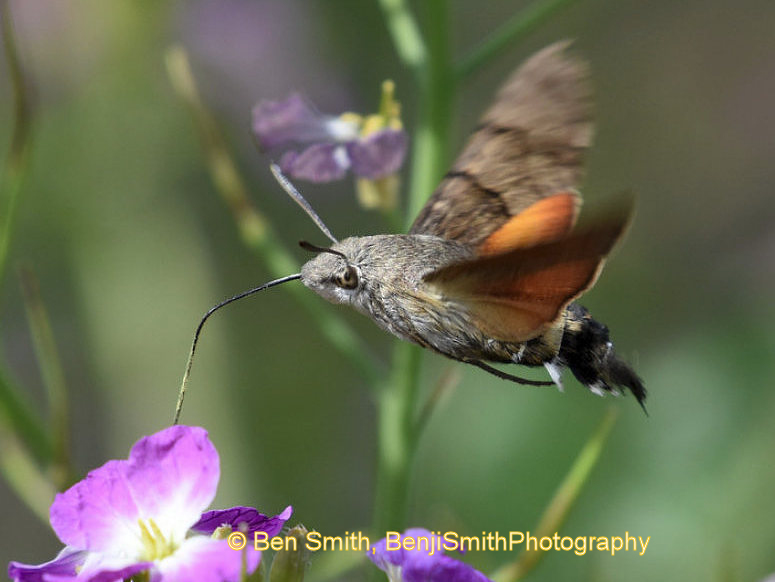
 Return to species list
Return to species list